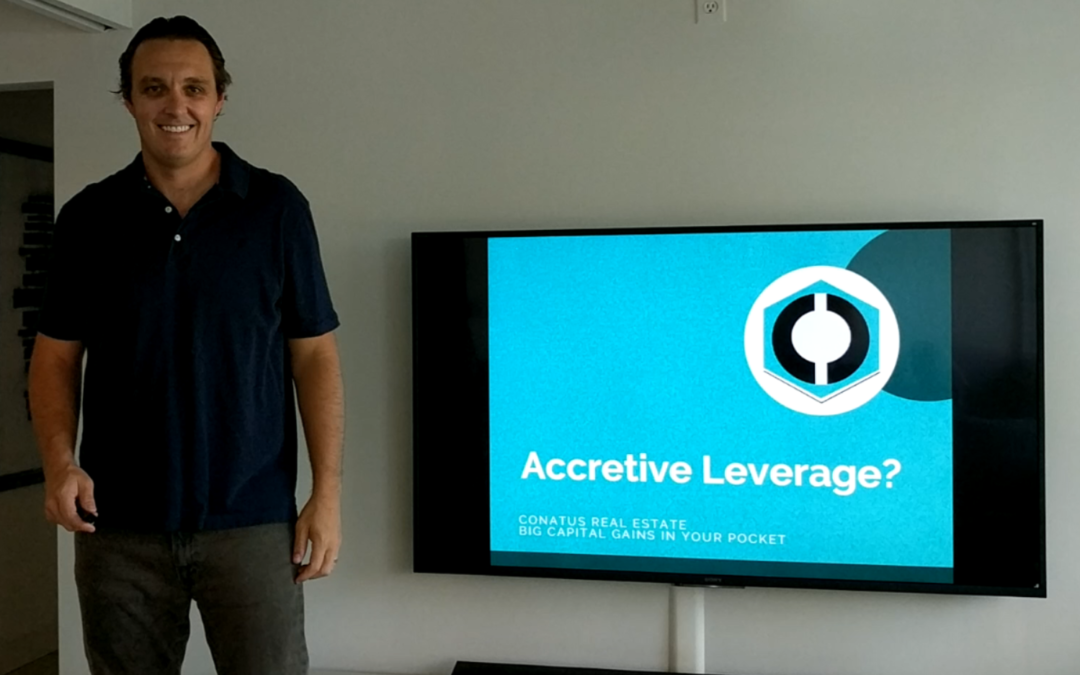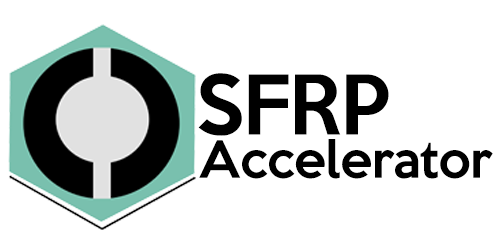Accretive Leverage?
Accretive Leverage describes a scenario where the use of leverage increases current cash flow returns. With recent interest rate drops, investing with accretive leverage may be possible.
FULL TRANSCRIPT
Accretive Leverage is the icing on the cake of real estate investing. In the next five to seven minutes I’m going to tell you why.
Let’s start with the basics. Accretive means to increase something by gradual addition. So we’re making small additions so that the great pot grows bigger over time.
Leverage is basically a loan. We’re using borrowed capital as a source when we’re making our investment. You add them together, and you get accretive leverage. This means that as we’re increasing our loan the returns from the investment are also increasing, so we think about it different way. We’re using leverage to achieve higher performance on our investment.
Why is it important? There’s so many different things in real estate investing that we can control and some that we can’t. Investment attributes are something that we, for the most part pretty much can’t control. If you look at a rent amount, purchase price, these things are pretty much dictated by the market. The rehabilitation costs, that’s dictated by the condition of the property. All of these things have low volatility. They don’t really change all that often. Interest rates would be something, and example of a high volatility item. It’s changing all the time. We definitely don’t have control over it. And sometimes it’s changing on a daily basis. We may not really understand why it is that they’re changing either. The one thing that we have full control over is the amount of debt that we use when we buy a property.
This chart shows the volatility in mortgage rates over the last five years. It’s particularly interesting if you look at the person about 12 to 18 month, the most recent 12 to 18 months, you can see that there was a rise up of over a full percentage point most of the way through 2018. And this actually led to a little bit of a slow down in the fourth quarter in real estate. There was a few other things that contributed as well, but that led to a slow down and I think among other things, the Fed took note and they decided to start dropping rates in January.And this brought rates down by almost a full percentage point back.
I love to use examples and so we’ll bring one in here. In today’s market I don’t think that there’s many people who would be disappointed with a six Cap rate, especially on a $1400 rent in a great market like San Antonio. To find this example property we just went to the Conatus Real Estate Portal. We have all sorts of examples of available properties like this one. And I have a few just basic investment perimeters to you to use in the example.
But, before we move on just want to go through a couple more definitions. A Cap Rate. When we’re talking about Cap Rate, what we’re referencing this is all of the revenue that we take in from rent and things like that, less all of the expenses that we’re paying out and we end up with a bottom line income. So we take that income and to come up with our Cap Rate we divide that income by the total amount of the investment. We get a percentage number, which is our Cap Rate. And this essentially a grade of how well we did in our investment.
To move on to the Levered Yield, we take that same income and in this case we’re just subtracting our mortgage payment. And we’re left with what’s called a Levered Cash Flow. With that Levered Cash Flow, instead of dividing it by the total investment amount, in this case we’re just dividing it by the equity portion of our investment or the initial cash that we use to buy the property. This gives us our Levered Yield and this ends up being a grade of the overall investment. It has a portion that is driven by the property investment and also how well we use debt in our transaction.
In this first scenario we’ll take a look at interest rates, at where they sat, just at the end of last month, 4.73%. We can see in this scenario … I would call this a scenario of Limited Negative Accretion. And I say that because when we brought debt into this scenario, this conservative 50% LTV, it took our 6% Cap rate down to about 5.91%. And it got even a little bit worse when we took it up to 70, overall we lost about 17 basis points between the 50 and the 70% LTV.
So, because we lost return that’s Negative Accretion but it’s pretty slight. I would almost say that this is a point of indifference.
Let’s look what happens when we analyze the scenario, the Five Year High Rate. Here the rate is 5.61% and this is definitely a Non-Accretive Leverage scenario. We can see right off the bat, we look at our conservative 50% LTV and our rate drops from 6% all the way down to 5.38%. It gets even worse when we bump it up to 70 LTV and then our Levered Yield goes down to 4.64%.
By increasing our leverage we’re losing almost three quarters of a point in return, just from using the leverage. In this case if all we’re looking at, if we’re primarily driven by our current cash flow yield, we definitely would not want to use leverage if possible and we would want to mitigate our limit the amount over leverage we use if possible. Sometimes we just don’t have the cash available to make the investment. Maybe we just don’t want to invest at all if this the scenario.
But there’s some good news. Let’s look at the Five Year Low Rate scenario. Here the rates drop down to just above 4% and the interesting thing here is that we start with our Cap Rate of 6%, when we put leverage on, our Levered Yield goes up to 6.28%. So this tells us that this is an accretive leverage scenario.
It gets even better when we go up to a 70 LTV where we get up to 6.52 and we have about a quarter point benefit from using leverage in this scenario.
So, something happened here between the Five Year Low Rate and the Five Year High Rate. We crossed over a line where the use of leverage became beneficial. And so we have this point of indifference, our incretion line, don’t worry I did the math for you here and this point in this scenario is 4.47%. To take it one step further we can turn these into Accretion Zones.
Everything around this line we’re pretty much indifferent to the level of debt we use. We might look to other things to tell us how much debt we want to put onto the investment. But as we go below it, we’re in an Accretive scenario and so it’s more beneficial to have increasing amounts of debt. Above this line, debt is not our friend. And in fact it actually reduces our current return.
Conclusions; debt should always be used with tact. Increasing debt doesn’t always make for a better investment. Know your numbers and make smart choices. And you just might end up in a scenario in today’s market environment and today’s interest rate environment where you have opportunities to make investments with Accretive Leverage.
Thank you very much.


